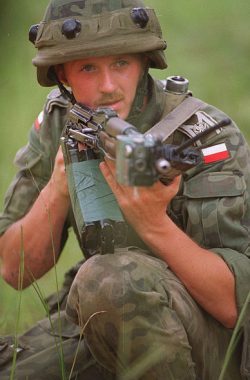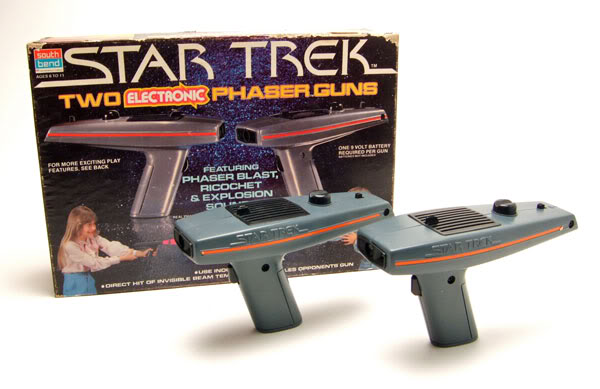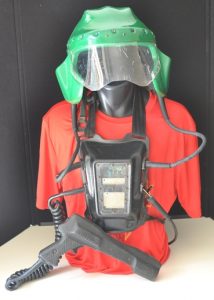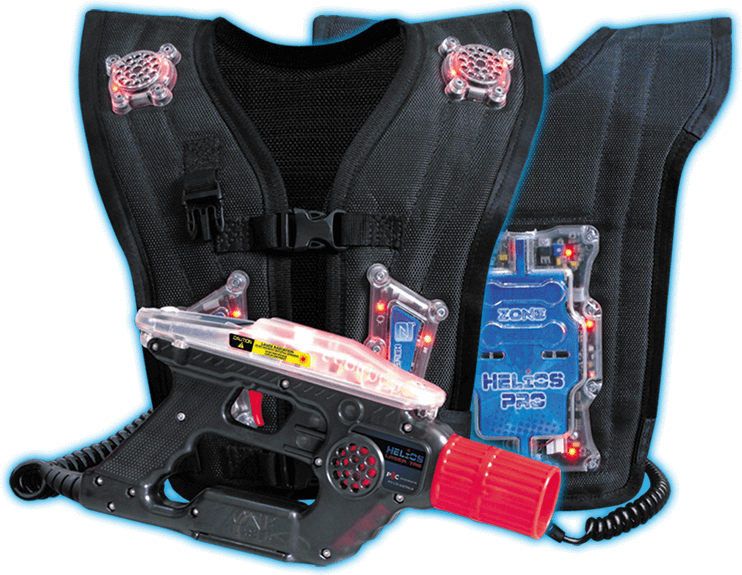Laser tag is a high tech sport that is played between a number of teams (2 or more) across a wide variety of game modes and formats. The game is played by players equipped with a “gun” which fires an infrared beam at other players wearing equipment or targets designed to detect this beam and record a hit. Players score points and complete objectives by tagging each-other and other targets around the area of play and the winner is the player or team with the most points. Laser Tag can be played both indoor and outdoor with various systems designed to accommodate various styles of play. There are various game modes which players can play ranging from the traditional “solo\team deathmatch” where highest score wins and Capture the Flag to completely custom formats unique to each system like Battleforce and Zone Domination.
The very first laser tag system was originally created in the United Sates back in the late ’70s and early ’80s like many things for military usage. This system was called MILES (Multiple Integrated Laser Engagement System) and consisted of a laser emitter attached to the barrel of a real gun loaded with blanks and the solders were outfitted with an array of sensors. It worked by detecting when a blank was fired and emitting a coded signal from the barrel mounted emitter. If this signal was detected by another soldiers vest it, it would emit a loud beep to signal that the soldier was “dead”. The original version of the system had many problems like the lack of statistics and recording who shot who. It also did not prevent a “dead” soldier from firing and was easy for soldiers to cheat by turning their equipment off and on again to “respawn” or “resurrect” themselves. The system was also very cumbersome and sometimes caused neck pain while being worn. This system saw various upgrades throughout the years with equipment for vehicles and the addition of GPS and RF to equipment to allow the remote deactivation of equipment to simulate artillery and other methods of attack. Significantly upgraded and modified versions of MILES are still in use today by many militaries around the world to simulate realistic force-on-force battles.


The first commercially available toy to use infrared light and a sensor was released in 1979 as the Star Trek Electronic Phaser which was created to accompany the release of Star Trek: The Motion Picture. These were created by a company called South Bend which was a part of Milton Bradley. This toy had no additional sensors worn by the person wielding the phaser and instead housed the sensor in the front of the phaser. When a phaser detected a burst on infrared light it would sound either a ricochet or an explosion meaning a miss or a hit respectively.
The first laser tag system that integrated with an arena that people could go play in was Photon. This system first appeared in 1984 and was created by George Carter III who had the idea for a laser tag system after watching Star Wars Episode IV in 1977. The very first Photon venue was in Dallas, Texas and opened on March 28th 1984. This system used a reverse IR setup where the equipment worn by the players emitted the IR and the phasers were the receivers. This method is still used by some laser tag systems today. This system birthed many features of laser tag we still use today like real-time scoreboards, spectator operated turrets, and the use of player handles\aliases. The equipment worn by players was quite bulky and heavy, weighing almost 7Kg. A home version of Photon was released in 1986 and by 1987 there was a total of 45 sites using the Photon system. Only a few years later in 1989 the company creating Photon closed it’s doors. At this point numerous other laser tag sites and systems had begun to appear, all laser tag systems can trace their origins back to this very system.


Today we have a multitude of different laser tag systems on offer with sites and systems all round the world. Australia is the home of three laser tag systems, LaserForce, Zone Laser Tag and Q-Zar/Quasar. These systems are used around the world in their various incarnations with Zone and LaserForce being the most popular here in Australia. These systems both have competitive scenes ranging from local site leagues right up through to national and international tournaments with Australia leading the way with the worlds largest competitive laser tag scene.

